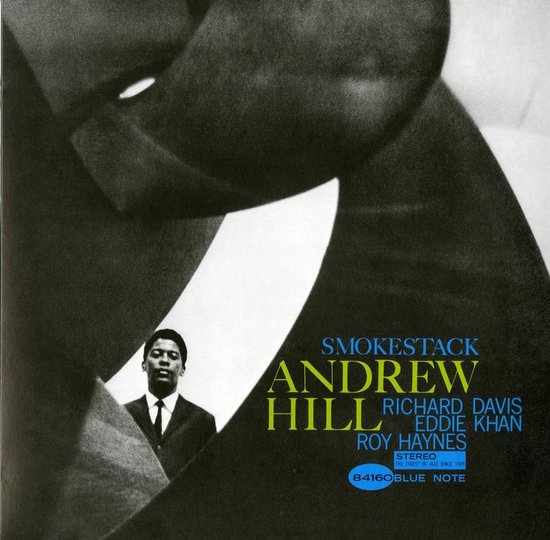
Working with the Queen of the Blues was a prestigious gig for Andrew Hill who also embarked upon a solo career whilst in her employ. Her popularity had soared during the fifties and she was enjoying the most successful period of her career. In the late-fifties, Andrew Hill started to work as an accompanist for jazz singer Chicagoan Dinah Washington. He also met two men who would influence him stylistically, Barry Harris and Joe Segal. Over the next few years Andrew Hill worked as a sideman and established a reputation as an up-and-coming pianist. Within a decade he had embarked upon a solo career. The following year 1954, Andrew Hill made his recording debut as a sideman. However, he settled on the piano which was the instrument he eventually made his name playing. This was with the Paul Williams’ band and much later, Andrew Hill remembered: ”At that time, I was playing baritone sax as well as piano.
Andrew hill smoke stack professional#
This was a revelation for the nineteen year old, who three years later, would make his professional debut. In 1950, saxophonist Pat Patrick taught Andrew Hill his first blues changes on the piano. However, he was still learning about music. He had already shared the stage with Charlie Parker and Miles Davis, and the future looked bright for the young pianist. By then, his career was well underway.Īndrew Hill had been playing in local R&B bands and alongside touring jazz musicians since he was a teenager. The high respect German composer, conductor, violist and violinist was teaching at Yale and taught Andrew Hill on an informal basis until 1952. The same paper would later document Andrew Hill’s career.īefore that, Chicago-born composer, arranger and musician Bill Russo met Andrew Hill and referred him to Paul Hindemith. This was ironic because a few years earlier, he was selling the paper on the city streets. This was all part of an act that Andrew Hill had developed, and between 19 he was a familiar face at talent shows in the Windy City, and won two Thanksgiving parties at the Regal Theatre, which were sponsored by the local newspaper, the Chicago Defender. He had started out as a boy soprano, singing, playing the accordion and tap dancing. He encouraged Andrew Hill, which may have changed the course of his career.


It turned out that he was a natural and his potential was spotted by another Chicago-born jazz pianist Earl Hines. However, he didn’t start playing the piano until he was thirteen. As a child, the future jazz great attended the University of Chicago Laboratory Schools. It was a rapid rise for someone who only took up the piano eight years earlier.Īndrew Hill was born in Chicago on the ‘30th’ of June 1941, and was brought up by his parents William and Hattie alongside his brother Robert, who was a singer and classical violinist. This paid off, and just two years later, Andrew Hill began working as a sideman. Earl Hines spotted the young pianist’s potential and encouraged him, and so did German composer, conductor, musician and teacher Paul Hindemith who he studied with until 1952. He had only started to play the piano when he was thirteen but made rapid progress. Offering as SEALED item, to be opened or held as a collectible by the buyer.By the time Chicago-born pianist Andrew Hill released his sophomore album Black Fire on Blue Note Records in 1964, he was already thirty-two, and was making up for lost time. We take this as evidence toward it being a 1st pressing. Plastylite pressed records (as the 1st pressing would be) are known to be heavier than the Liberty pressed records. We weighed several Liberty pressed Blue Note records in their (all non-laminated jackets with original inners) jackets, all weighed close to 250 grams.

There is no way to know without opening the record, but we can offer the following information: This copy of Smokestack weighs 295 grams in the jacket. The actual mastering for these two possible options would be the same. The disc is most likely either a 1st pressing (with Plastylite Ear/P marking) or a 2nd pressing (no Ear/P). This is a tricky record to date because it was released right at the transition from Blue Note Records being sold to Liberty in 1966. The shrink is totally intact without rips or tears. It is very rigid and totally flat on the table. The cover has all the indicators of a 1st pressing jacket. We acquired this in a collection of several crates of new old stock LPs purchased in the late 60s through the 70s which included a few Blue Notes.


 0 kommentar(er)
0 kommentar(er)
